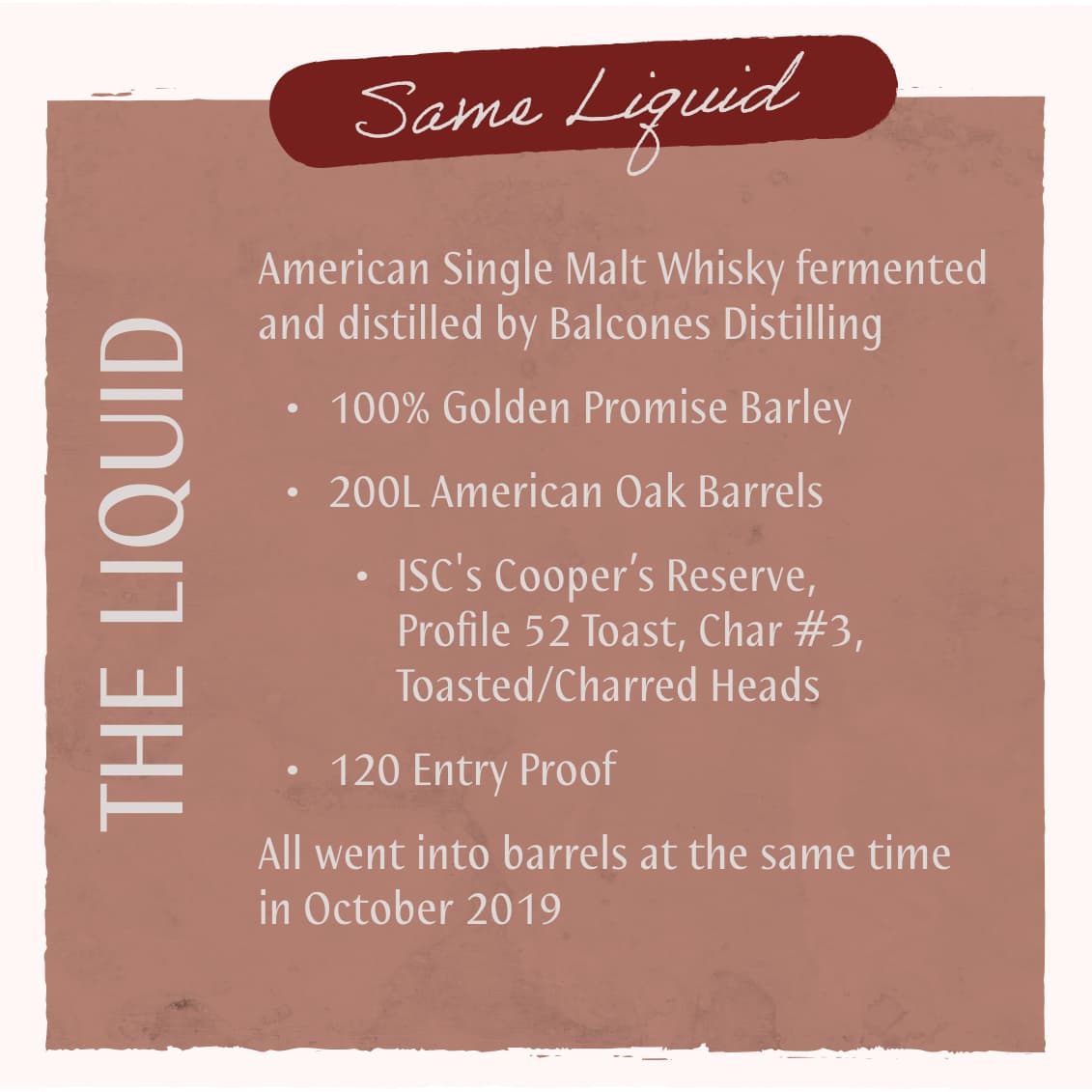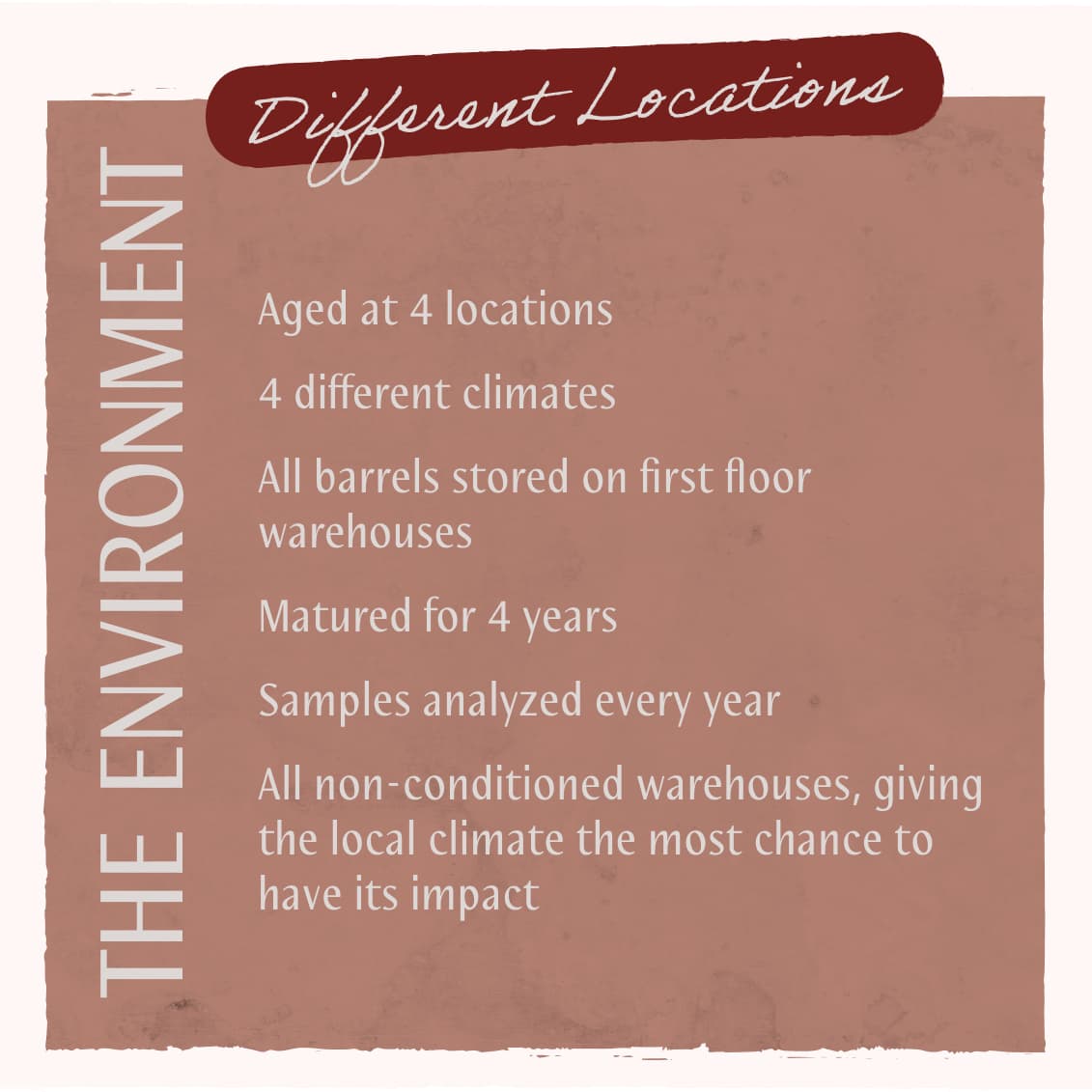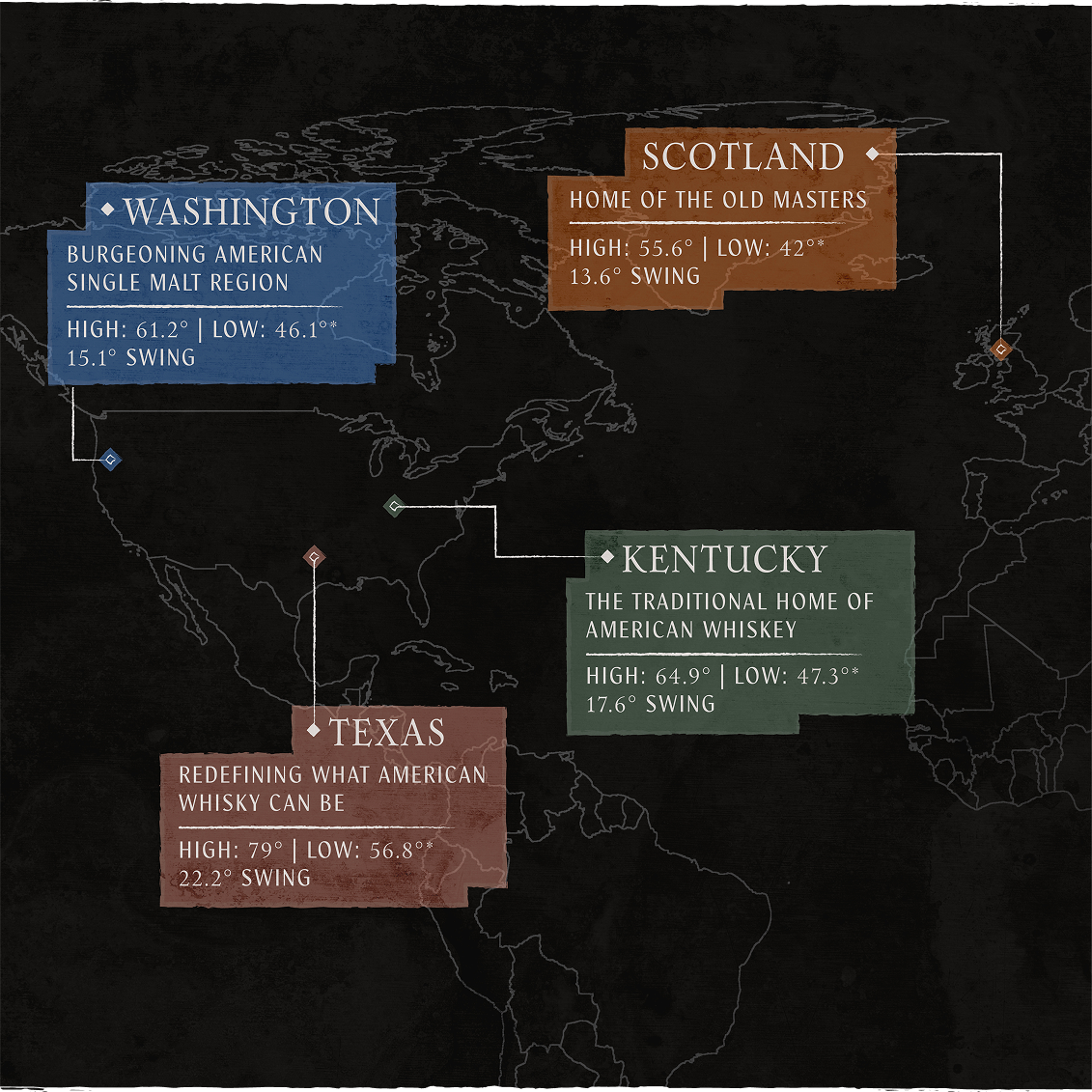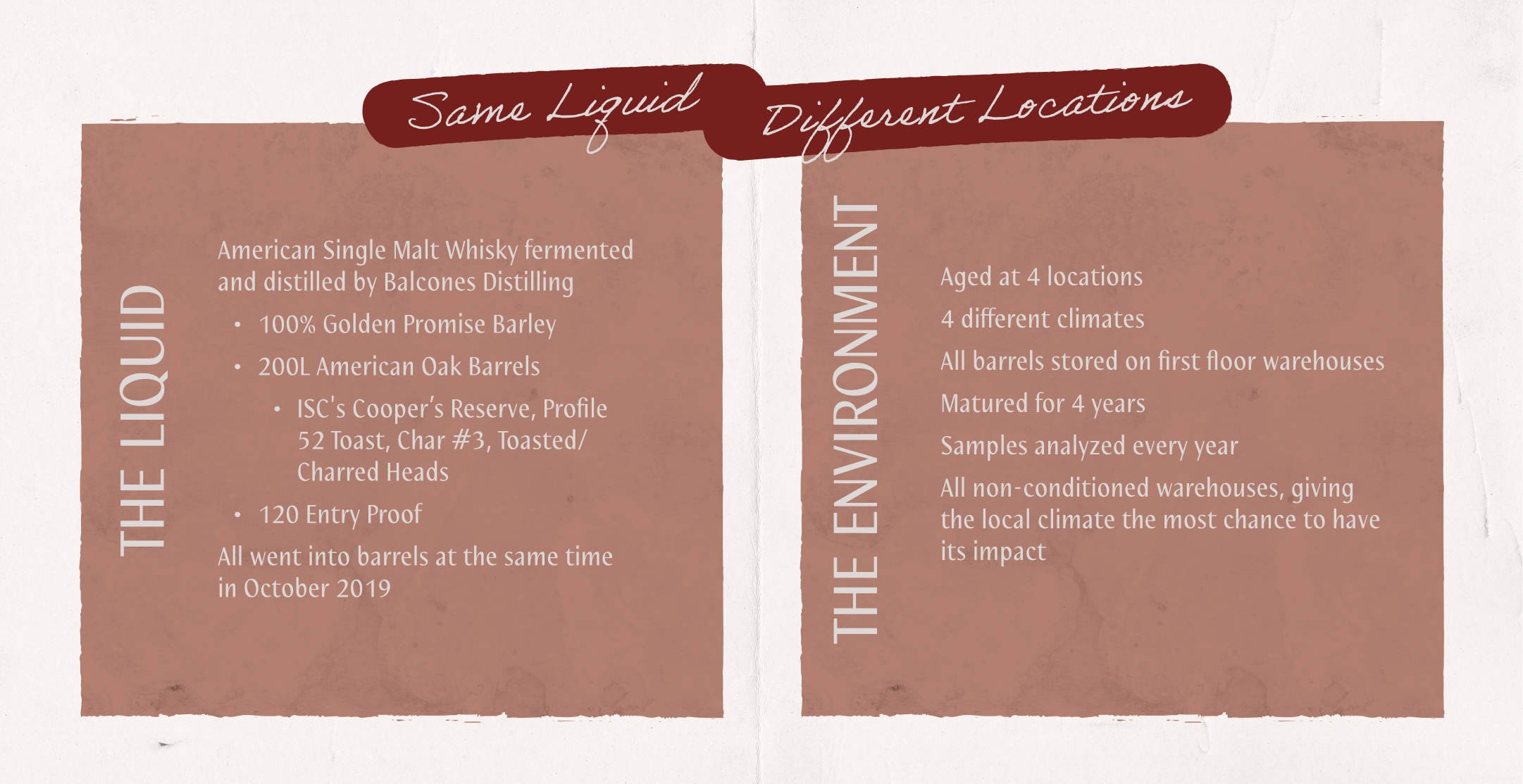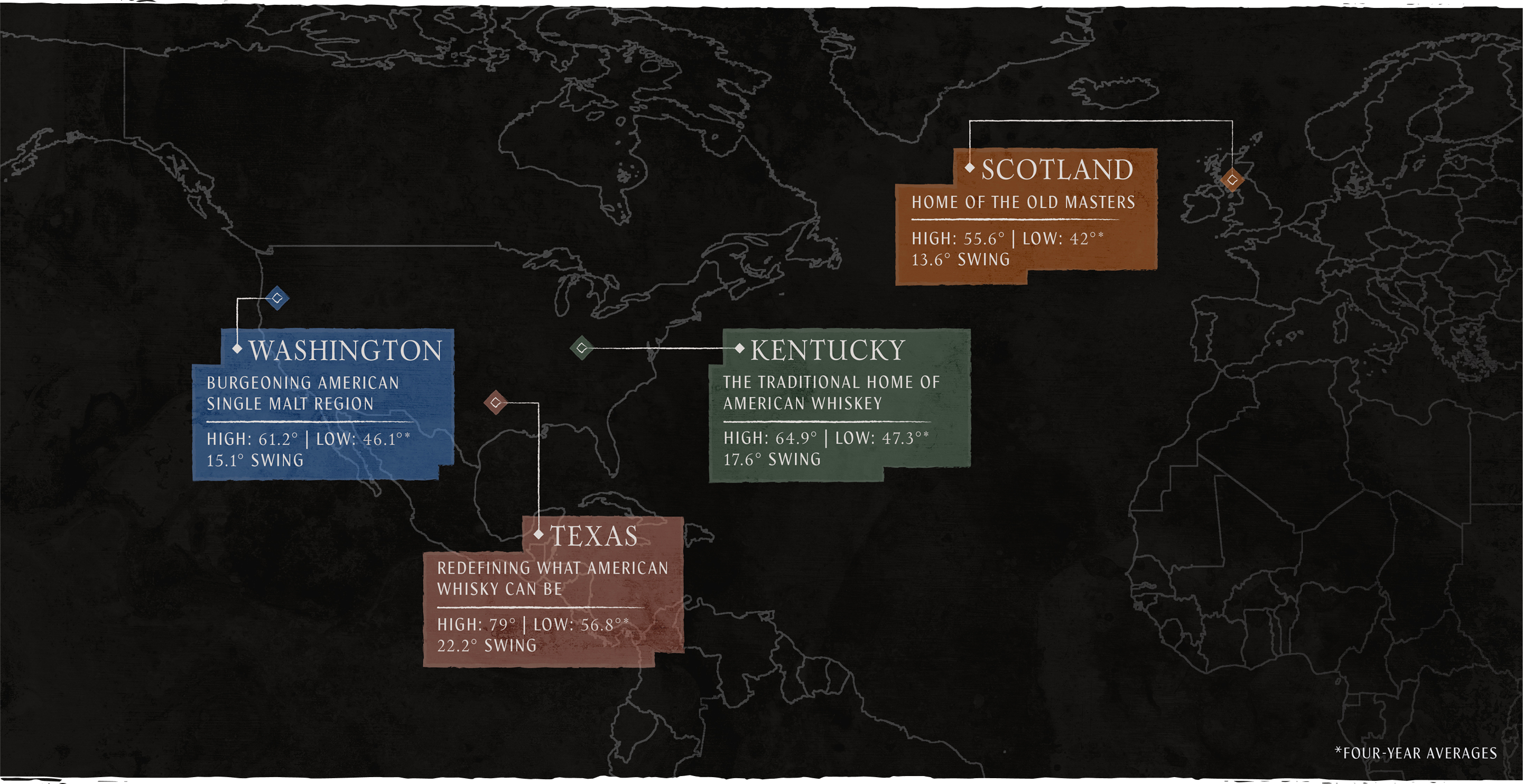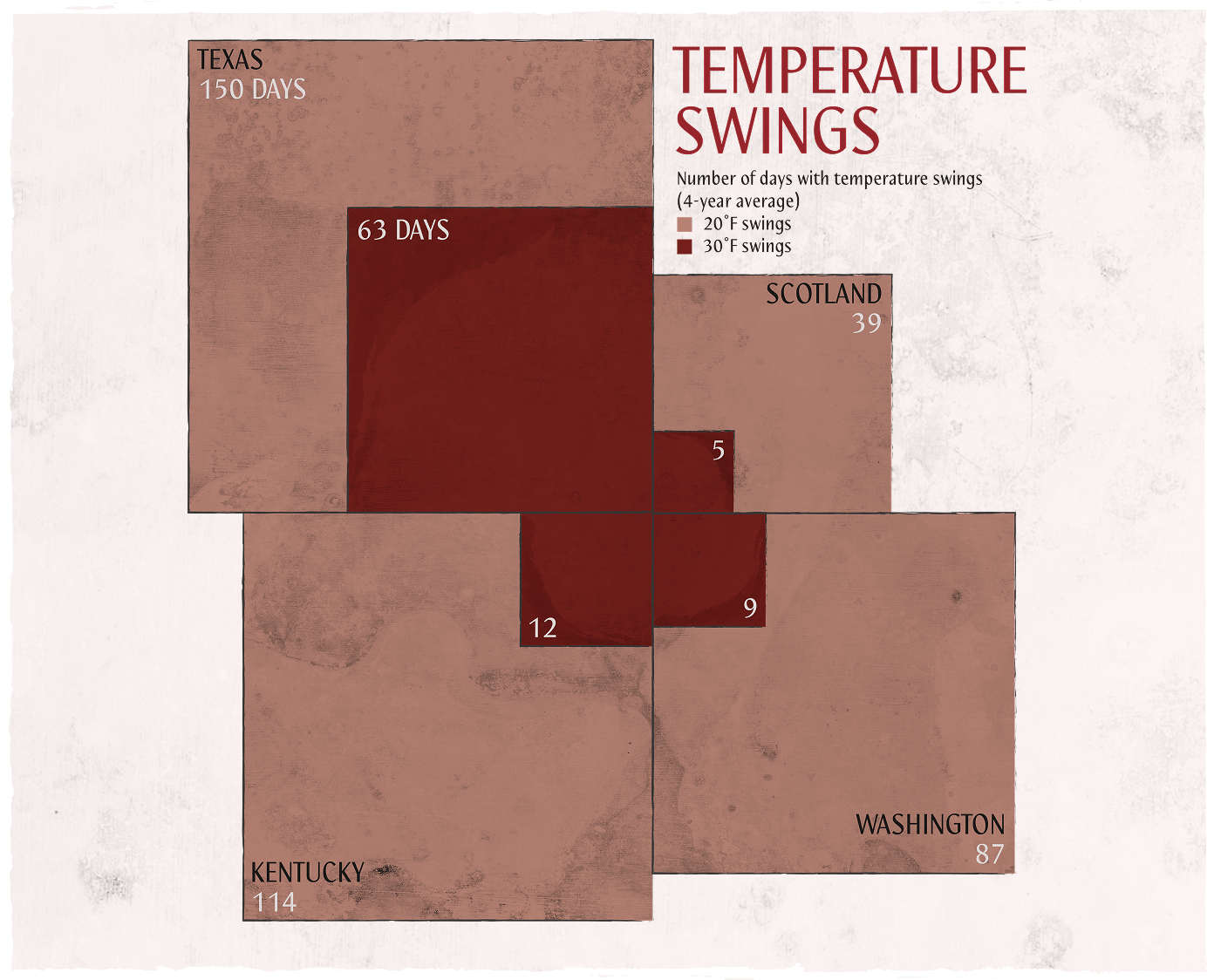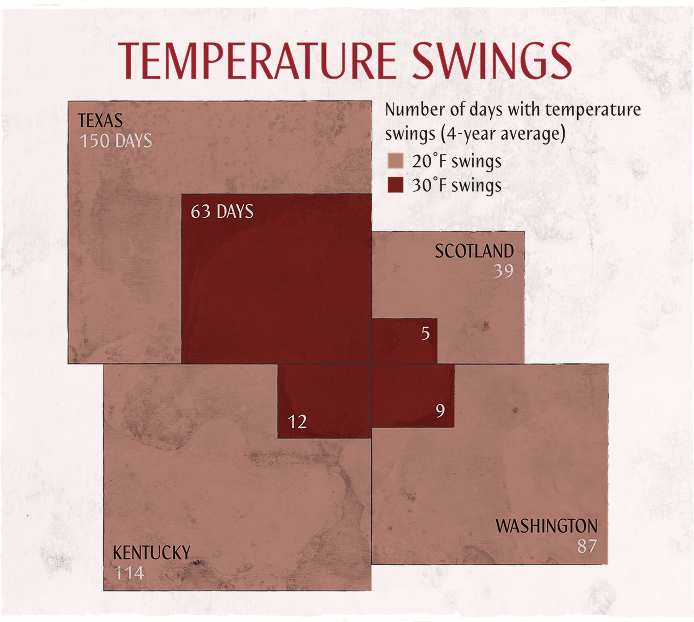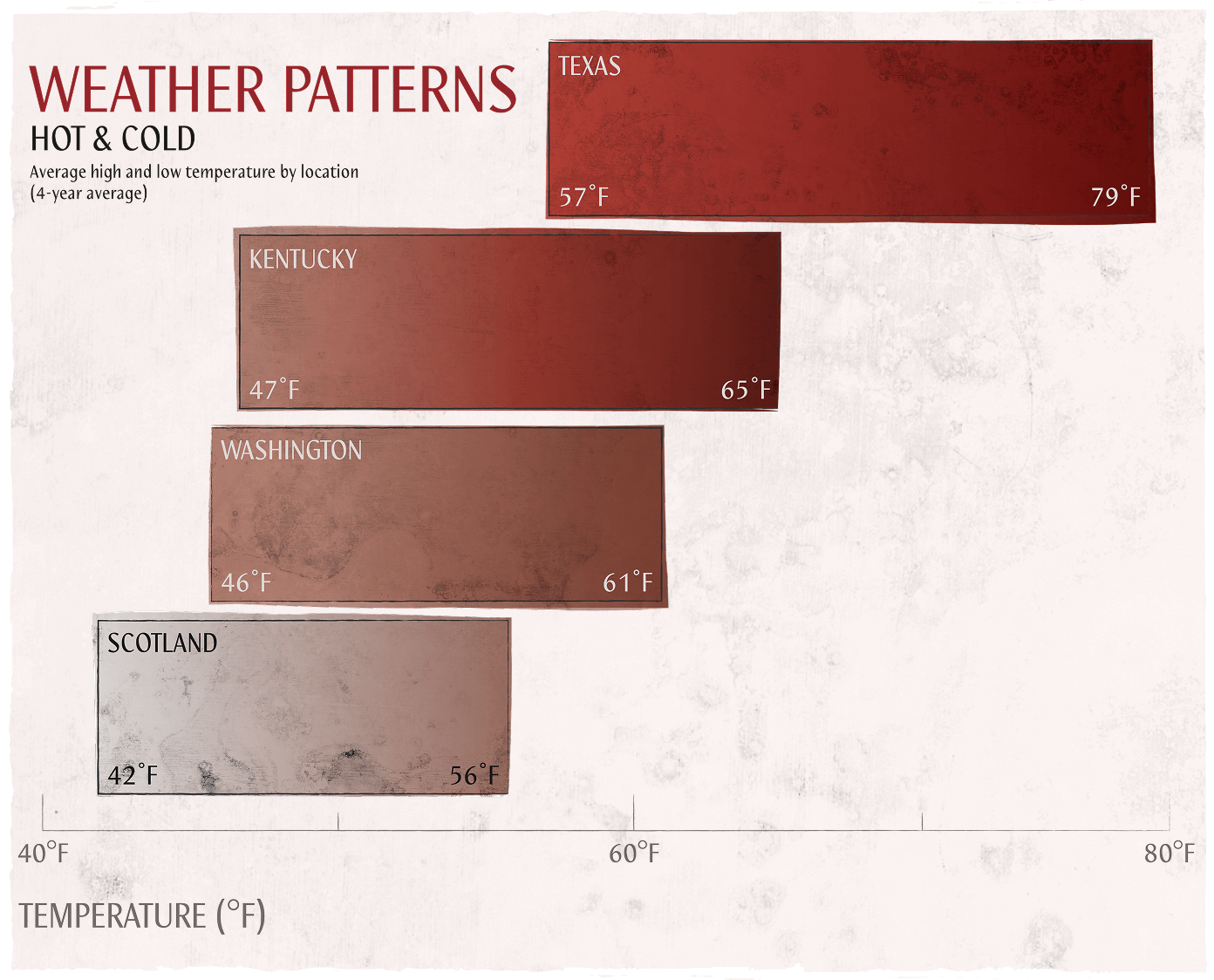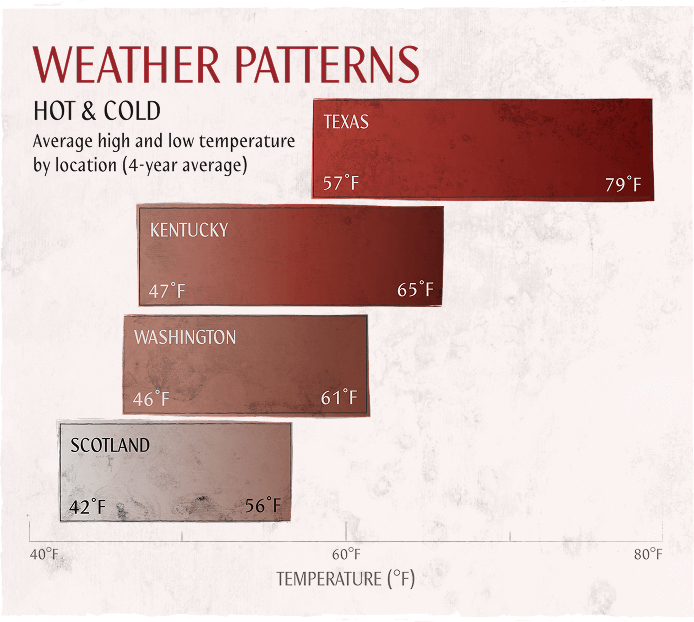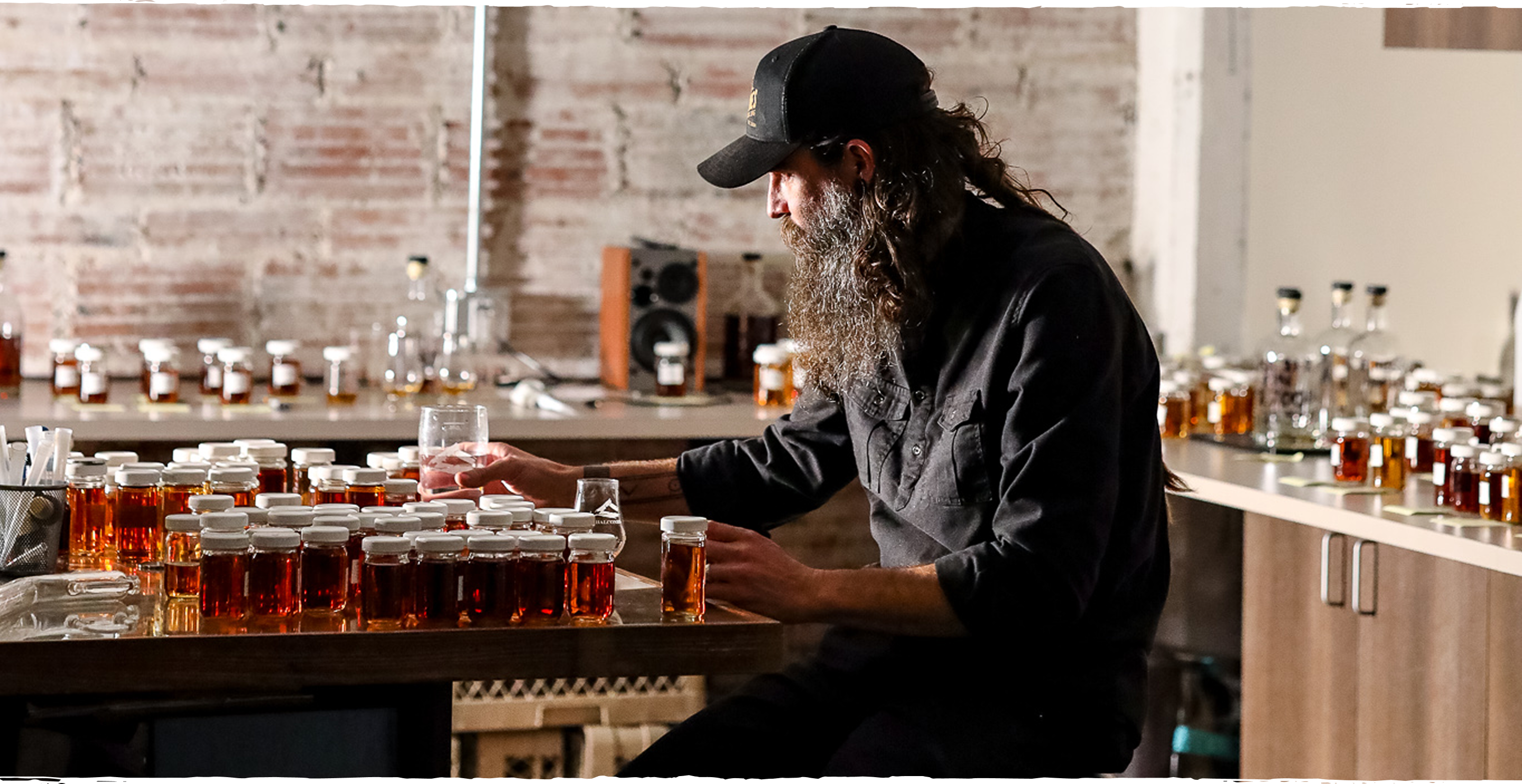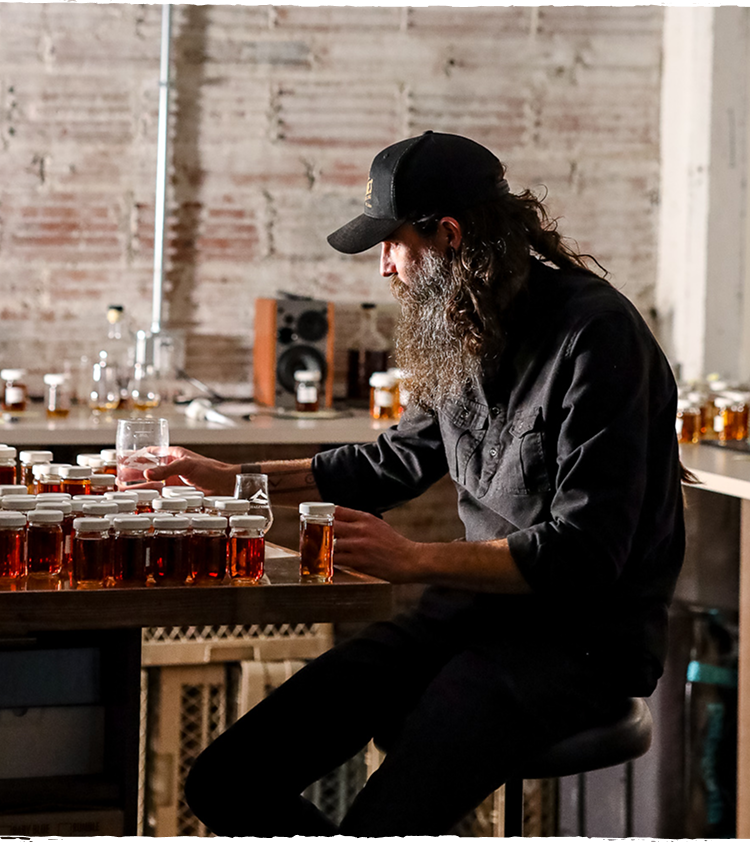

Exposing the Impact of RegionalClimate on Whisky
Whisky’s old wisdom says that the spirit, the barrel and time spent aging are the three factors that determine the character of your whisky.
But one thing we’ve learned in our years of making whisky in Texas is traditional thinking has never worked for us. We couldn’t help but wonder if the regional climate impacts a whisky’s unique character as much as the barrel it ages in. So we went in search of the answer for ourselves.
In October 2019, we partnered with the Independent Stave Company and distilleries in well-known whisky-making regions with distinct climates — Scotland, Washington, Kentucky and, of course, Texas — to put our whisky into 20 identical toasted and charred new American oak barrels, five barrels in each region.
Four years later, we had definitive proof that climate had just as much impact, if not more, on whisky maturation than the barrel itself. And Texas produced a whisky unlike any other.
THE ORCHESTRA OF FLAVORS IN OAK
Oak is not just a single flavor, it is an orchestra of flavors derived predominantly from three complex organic compounds: Hemicellulose, Lignin and Lactone. When the barrel is toasted and charred, these complex compounds break down into smaller compounds, causing a range of unique flavors, like honey, spice and smoke, to form within the oak barrel.
Each of these compounds are stored at different depths in the barrel staves. Some survive near the charred surface, others don’t. So the liquid needs to go much deeper into the barrel to access and integrate certain flavor compounds into the spirit.
Our study proves that the climate a spirit is exposed to is intrinsically linked to the flavor compounds that spirit is able to reach and, as a result, the final flavor of the liquid.
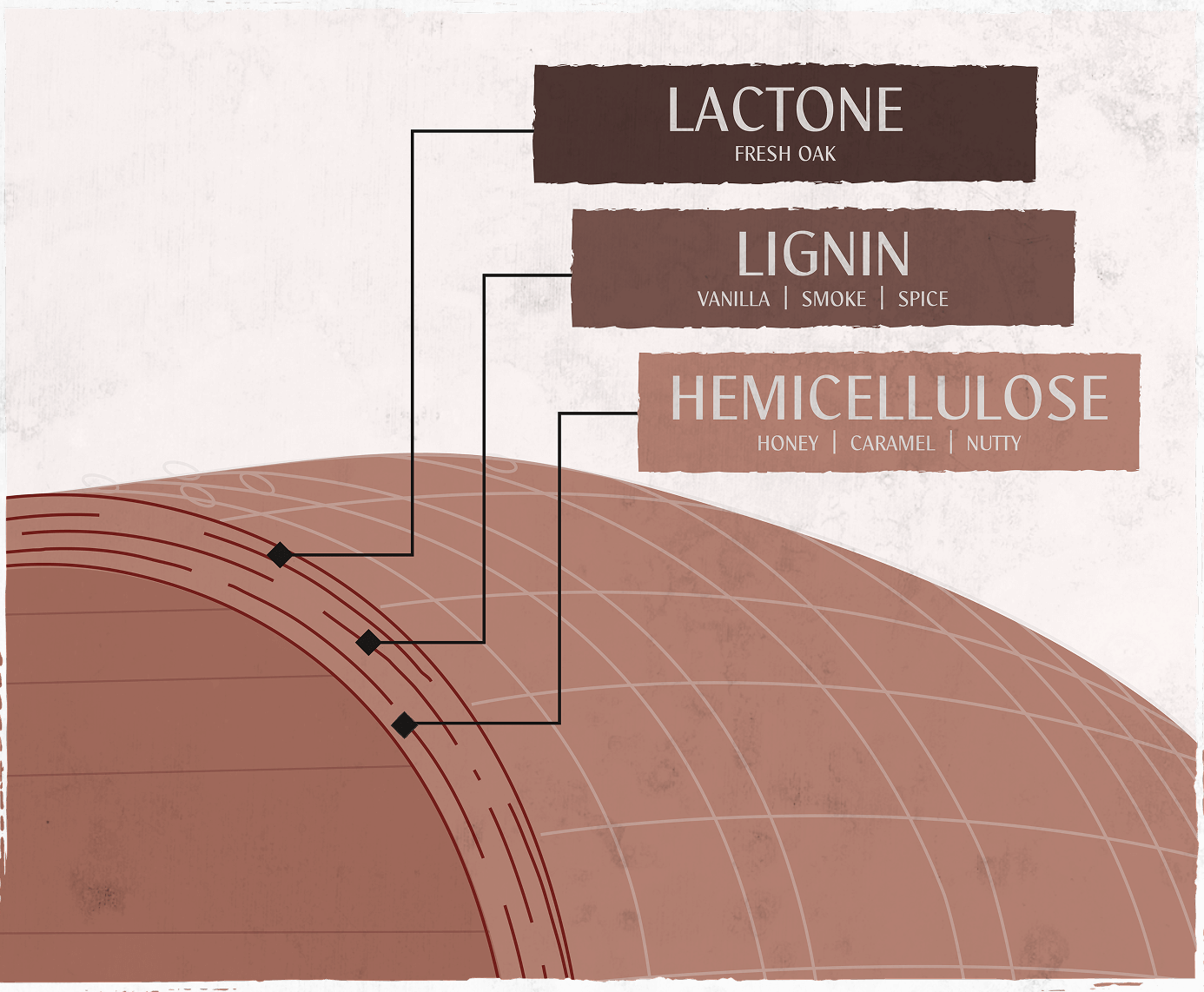
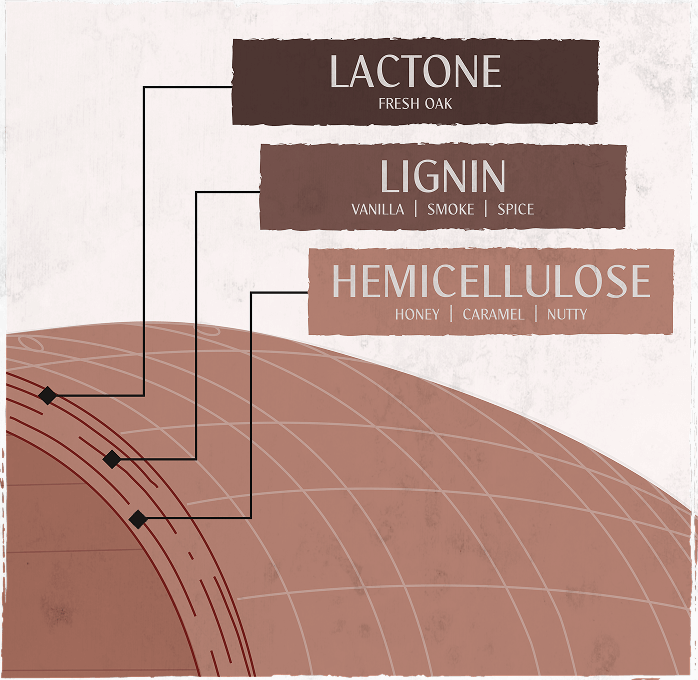
THE SIGNIFICANCE OF TEMPERATURE SWINGS
There’s no denying the impact of climate on whisky. Warmer weather causes the oak barrels to expand, allowing the whisky to absorb into the wood. When the weather is cold, the oak contracts and the whisky is released from the wood.
But our study revealed it’s not as simple as hot summers and cold winters. The variance in temperature and the number of days each barrel is exposed to extreme swings in temperature has a significant impact on the final flavor profile.
Across the four study locations, Texas had the most dynamic climate, experiencing 213 days of extreme swings in temperature per year, nearly 60 percent of all days.
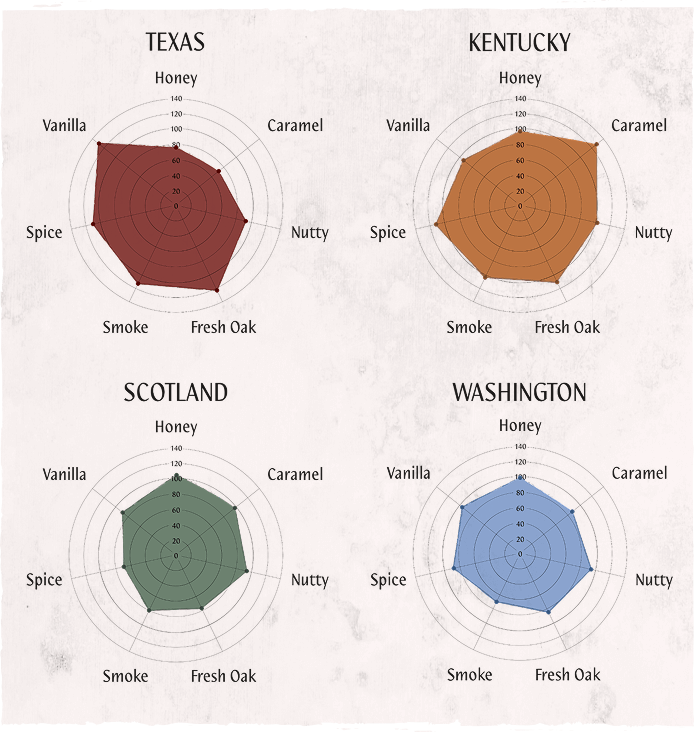
Four Regions. Four Different Flavors.
Ultimately we found that the cooler regions' temperature cycling didn't allow the whisky to penetrate as deeply into the barrel stave, leading to a preference for shallow hemicellulose (wood sugar) derived flavor compounds like honey, caramel and nuttiness. Though each location bore a distinct climate fingerprint on the flavor of the whisky matured there, Scotland, Washington, and to some extent Kentucky, all favored shallow wood sugar derived flavor notes.
Despite starting life as the same Balcones new make in the same barrel type, the Texas whisky developed a flavor all its own. The regular 20-30 degree temperature swings turned our barrels into wooden pressure cookers, driving the whisky deeper into the staves where a harmony of vanilla, smoke, spice and fresh oak notes could be absorbed — accessing flavor compounds the cooler regions could not. But the Texas whisky didn't simply have more of the study flavor compounds, instead it preferred the compounds found at depth, while having less of the shallow flavors like honey, caramel and nutty notes compared to the cooler regions.
